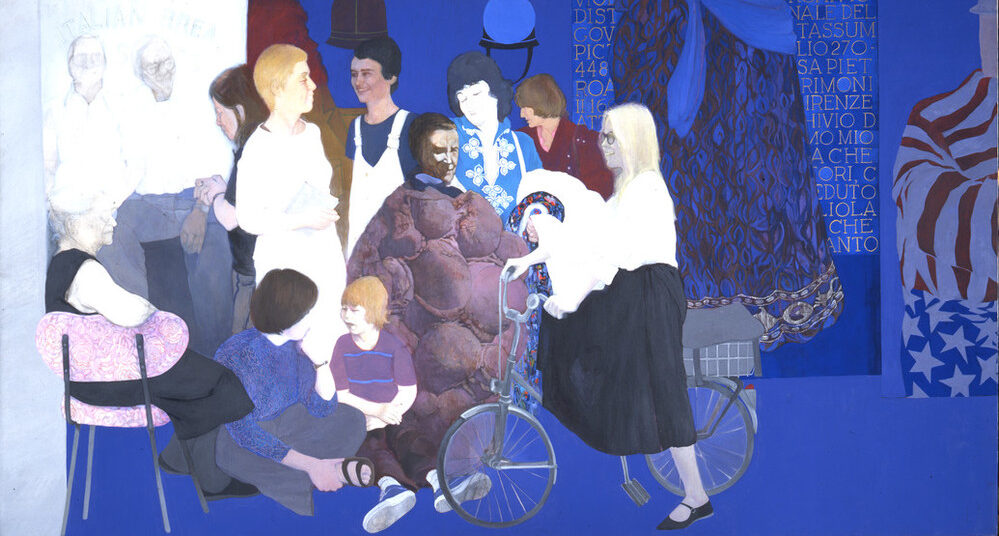This Women’s History month, we focus on the the impactful legacy of women who have lived and worked as artists in SoHo. Specifically, we are looking back on the work of May Stevens and her famed 1978 painting titled SoHo Women Artists.
Stevens was known for using her artwork as a medium of activism, and this is evident in her work. In a career spanning 70 years, she created art to combat social injustice and amplify female voices. Stevens lived and worked in SoHo with her husband Rudolf Baranik (also an artist) and their dog, Sparta. Stevens was one of the pioneers of the 1970s feminist art movement in New York City. Banding together with other female artists and critics to raise awareness and consciousness questioning the patriarchy within the arts, she actively engaged in social change. Stevens and nineteen other women formed a feminist collective which created a quarterly magazine titled Heresies: A Feminist Publication on Art and Politics. In a recent SoHo Memory Project article, Yukie Ohta looked back on a conversation between two Heresies founders, Joyce Kozloff and Elizabeth Weatherford.
At 12 feet wide, May Steven’s SoHo Women Artists is monumental, both in scale and ambition. The painting is said to mimic an academic history painting in a contemporary style. Historically, traditional western paintings from classical or Christian history have tended to exclude female figures. SoHo Women Artists is part of a series of history-referencing works created by Stevens to present and call for the inclusion of women in art history. The work reflects an alternative history: one which recognizes and proportionately represents female artists. This series was inspired by the 1971 ARTnews article “Why have there been no great women artists?” by Linda Nochlin.

The painting was created through referencing photographs of Stevens’ friends who helped shaped the feminist art revolution having roots in SoHo. Organized in a frieze-style composition, the women in the painting are as follows (from left to right): Signora d’Apolito, owned a bakery frequented by Heresies members; two men from SoHo’s Italian-American community; May Stevens herself; artists Harmony Hammond, Joyce Kozloff (with her son Nikolas), and Marty Pottenger, fellow Heresies; Louise Bourgeois in a wearable sculpture created by herself; artist Miriam Schapiro and critic Lucy Lippard (also a fellow Heresies member); and lastly artist Sarah Charlesworth.
In the book titled May Stevens, author Patricia Hill states that “[Stevens’] aim was to highlight feminists working independently but in concert” and deconstruct history to highlight those silenced and unrecorded lives.
Top Image: May Stevens in her SoHo studio in 1978. Credit: The New York Times, 2020